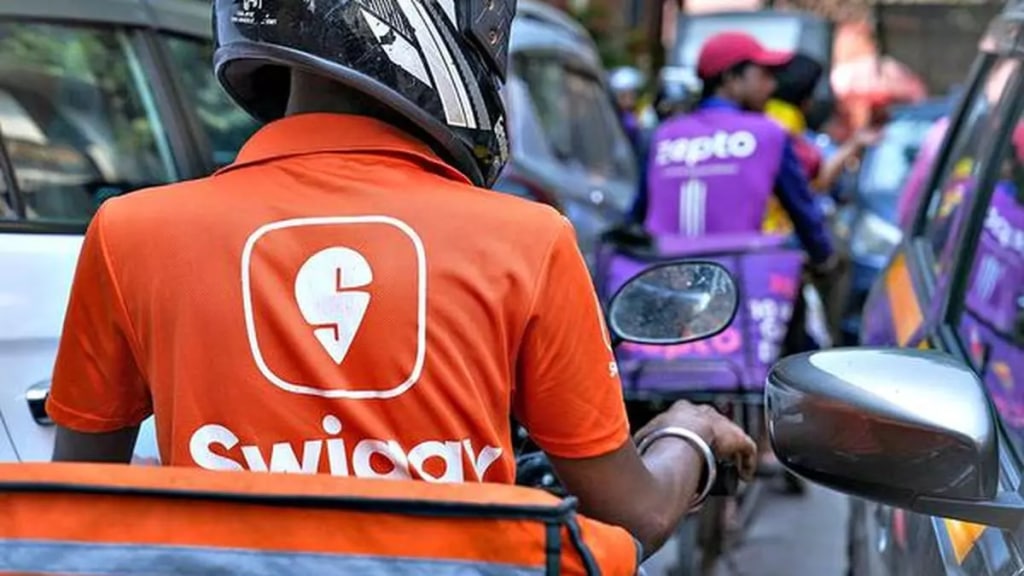Quick commerce is already a $3.5 billion market and is projected to grow at over 40 per cent CAGR for the next 4-5 years to reach close to $9 billion by 2028. Quick commerce, a sub-class of e-commerce, has benefitted from rising shopping frequency and extra commercial time post orders. Loyal quick commerce consumers shop on an average of 10-12 times a month, purchasing mostly groceries while products within beauty & personal care, household care, kitchen appliances, and gifting items are gradually gaining traction. Unlike the browsing-heavy nature of platforms like Amazon and Flipkart, quick commerce consumers exhibit a distinct behaviour – they often know exactly what they want. Here are key trends in the quick commerce space, as listed by Elara Capital…
Targeted purchases > category exploration
Quick commerce consumers usually go for a direct product search as against the e-commerce users – it forms 40 per cent of searches on quick commerce; 60 per cent are via category exploration, sharply distinct to e-commerce platforms, stated the analysis report by Elara Capital. For example, search volumes for Lay’s chips are higher than for the Chips category. This is similar for other categories also, underscoring a use case for targeted purchase on quick commerce platforms. “Data-backed micro understanding of consumers’ habits within the operating area of the dark store would be essential for a healthy throughput per store/ lower payback period. Right assortments at the right price shall separate the performance of two dark stores in the same area. Micro level data intelligence is crucial, especially to maintain robust SSSG and breakeven the delivery costs,” the brokerage firm stated.
Ad revenue
Ad income is a big incremental lever for quick commerce platforms than traditional retail that relies solely on trade commission. “Per our checks, ad revenue ARR for three major QC platforms together would have already reached Rs 30-35 billion, half of Amazon India’s FY24 ad revenue (Rs 67 billion). Blinkit’s share is 45 per cent, Zepto’s 35 per cent and Instamart’s 20 per cent,” Elara Capital stated. This is noteworthy given that per Redseer analysis, quick commerce shoppers form just around 8 per cent (18 million in CY23) of online commerce users (excluding quick commerce at 230 million).
According to the report, key factors behind this are: 1) greater frequency of shopping on quick commerce platforms, 2) brand onboarding policies of such platforms mention commitment of minimum visibility money (ad spend on platforms), more prevalent for not-so-popular brands in the category, 3) two-way ad revenue – ads for onboarded products and ad placements on post-order delivery tracking window (10-20 minutes of commercial time till order delivery). It is worth noting here that smaller brands are more aggressive as regards ads on quick commerce platforms than larger brands. “Blinkit’s algorithms are efficient, yielding higher ROI than others,” it said.
Rush by brands to onboard
There is a rush among brands to onboard themselves on quick commerce platforms as the higher inventory turn led by the quick delivery proposition has caught the brands’ eyes to boost sales. However, with store size constraints (quick commerce ~3,500 sqft, modern trade ~40,000 sqft), the platforms are selective while onboarding brands, even as the number of brands is set to increase with a rise in dark store size.
For quick commerce platforms, balancing a mix of consumer-ordered labels (established FMCG giants) and smaller new-age brands is the key. Quick commerce is playing a key role in some categories – 60-70 per cent of retail online business for soft drinks led by quick commerce, Elara stated.
Non-metro performance could be non-linear
Per Elara’s checks, non-metro markets are demonstrating a non-linear performance, led by uncertainty over unit economics, product assortment plays and sharply different throughput per store. “Kiranas and modern trade channels may be relevant for longer periods and will co-exist as: a) consumers are connected to Kirana shops due to credit period features (more relevant in tier II/III areas), b) fewer working professionals per household, unlike metros, and healthy volumes for low sachet products (counter-productive for quick commerce’s average order value),” the report maintained, while adding that differentiation will be led by tapping emerging cities with rising consumption patterns. Furthermore, modern trade players such as DMart may not see significant impact (in tier II and III) given that target consumers are more price sensitive.
FMCG dominates GMV; Kirana stores gearing for delivery
To boost the average order value, quick commerce platforms are increasingly adding more product categories. Currently, FMCG products make up 80 per cent of sales, and over 90 per cent in smaller cities. However, other categories are growing slowly outside big cities. Amidst this, the report stated that large Kirana stores have accelerated home delivery services of goods (slotted as well as quick delivery in nearby areas), which may increase difficulties for quick commerce in such geographies. Margin-wise pecking order (for manufacturers) is: Kirana > Modern Trade> Quick commerce.
